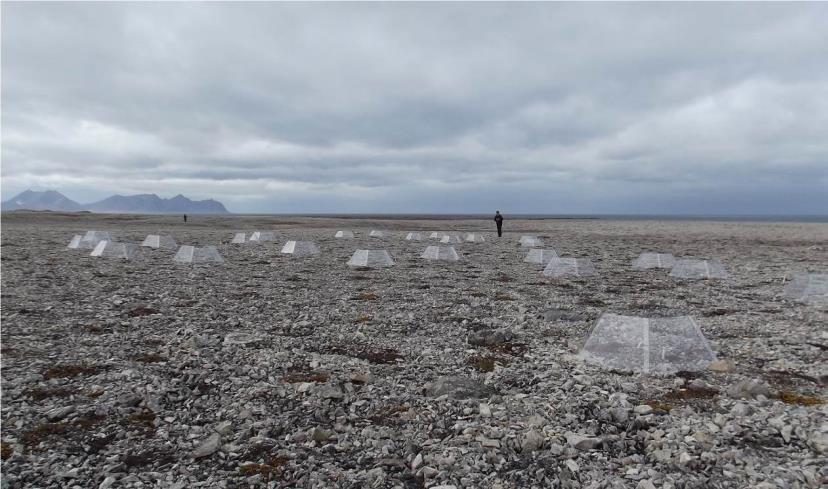An interview with Marta Misiak
March 2020
Marta Misiak is a PhD student at the Natural Environment Research Council (NERC) British Antarctic Survey and Cardiff University. She is a member of the Microbiology Society, and in this interview, she tells us more about her research in polar regions and the persisting issue of climate change.
Where did your interest in microbiology come from?
During my undergraduate course one of the modules I took was microbiology. It covered a wide range of topics, including bacteria, fungi and viruses. It also included a practical aspect of microbiology; including aseptic techniques, identification of bacteria, which shed the light on how often we are unaware or underestimate what a huge role micro-organisms play in day-to-day life, as they are everywhere. The lecturer who was responsible for the module worked on an infectious disease ward and had some first-hand stories on how quickly such small organisms like bacteria can affect human life. To this day I remember how passionate she was about her work and how she could communicate it to spark the interest of a whole lecture room, filled with students on a Friday afternoon. I got fascinated by the world of microbiology that we cannot see but are affected by. Effectively, as part of my undergraduate third year project I looked into biofilms created by bacteria.
My other interests were the environment in general; as part of my master project I looked at carbon dioxide emissions from subarctic soil, combining the environment and microbiological aspects together. This led to me doing a PhD, investigating fungal responses in Arctic and Antarctic soil, subjected to climate change.
Tell us more about your research
Polar regions are subjected to rapid climate change, with increased air temperatures and precipitation being predicted during future decades. Rising temperatures and precipitation will have an effect on saprotrophic soil fungi and other microbes that are key to nutrient cycling and decomposition processes; owing to their abilities of remaining physiologically active at low temperatures and water availabilities. As part of my PhD, a combination of field warming experiments and laboratory experiments were used to investigate the effects of warming, water and nutrient availability on the abundance, growth and enzymes of a range of saprotrophic fungi in Arctic and Antarctic soils. The activities of the fungi were analysed on a physiological and a genetic level.

The High Arctic soil warming experiment where open top chambers were used to increase temperature of the soil. The chambers were built from plastic sheets and erected to imitate a greenhouse effect. The experiment was located on Svalbard, more than 10 km away from Ny-Ålesund.
Why is this research important to microbiology?
In Arctic and Antarctic environments micro-organisms are the key drivers of the decomposition processes; hence are driving the soil process. In cold regions, micro-organisms have the potential to affect terrestrial carbon cycling. Knowing what effect, the likely changes to the soil environment will have on the micro-organisms will help researchers understand what the future might bring; highlighting how important the microbiological aspects of terrestrial environments are on a global scale. My focus was on fungi, as their role is often underestimated; yet in polar regions, they are more abundant than bacteria are.
Why is it important to be a member of an organisation like the Microbiology Society?
The Microbiology Society is a membership organisation for researchers interested in micro-organisms. For me, unravelling the unknown to get a better understanding of the complex processes that occur on a microbiological level is important, otherwise we will not have a full understanding of the main aims of our research. The outcome of my research shed some light on how fungi are affected by the likely changes associated with climate change. It also raised future questions, guiding future research in the right direction. Moreover, as my research was based on polar regions, I had the privilege to visit some of the most amazing parts of the world and share that experience with others, through outreach activities and spark the interest in future polar microbiologists.


